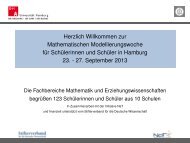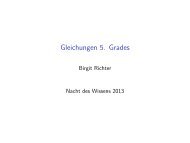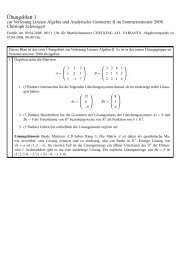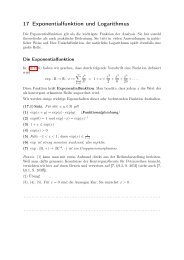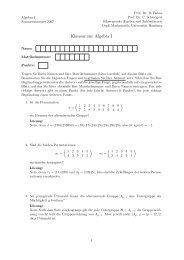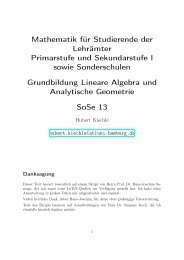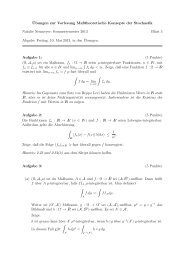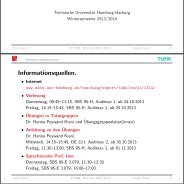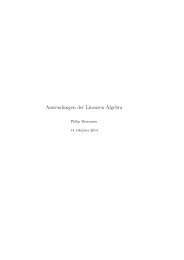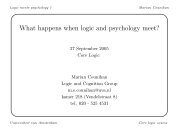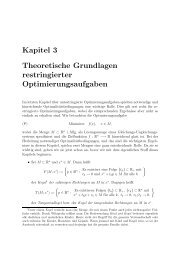pdf file
pdf file
pdf file
You also want an ePaper? Increase the reach of your titles
YUMPU automatically turns print PDFs into web optimized ePapers that Google loves.
(a) The functor F is essentially surjective, i.e. for any W ∈ Obj(D) there is V ∈ Obj(C) such<br />
that F (V ) ∼ = W in D.<br />
(b) The functor F is fully faithful: for any pair V, V ′ of objects in C, the maps<br />
on Hom-spaces are bijective.<br />
F : Hom C (V, V ′ ) → Hom D (F (V ), F (V ′ ))<br />
Proof: see [Kassel, p. 278]. The proof uses the axiom of choice.<br />
As a further consequence of the universal property of the enveloping algebra U(g), we get<br />
from maps of Lie algebras maps of unital associative algebras:<br />
g → K gives ɛ : U(g) → K<br />
x ↦→ 0<br />
g → g × g ⊂ U(g × g) gives Δ : U(g) → U(g × g) ∼ = U(g) ⊗ U(g)<br />
x ↦→ (x, x)<br />
g → g opp ⊂ U(g opp ) gives S : U(g) → U(g opp ) ∼ = U(g) opp<br />
x ↦→ −x<br />
These maps are explicitly on the generators x ∈ g ⊂ U(g)<br />
ɛ(x) = 0<br />
Δ(x) = 1 ⊗ x + x ⊗ 1<br />
S(x) = −x<br />
These maps allow us to endow tensor products of representations of g, the dual of a vector<br />
space underlying a representation of g and the ground field K with the structure of g-<br />
representations.<br />
Observation 2.1.23.<br />
• Let V, W be representations of g. The U(g)-module structure on the tensor product V ⊗W<br />
is then obtained from<br />
U(g)<br />
Δ<br />
−→ U(g) ⊗ U(g) ρ V ⊗ρ W<br />
−→ End(V ) ⊗ End(W ) → End(V ⊗ W ) .<br />
This is uniquely determined by the condition<br />
x.(v ⊗ w) = x.v ⊗ w + v ⊗ x.w for all v ∈ V, w ∈ W and x ∈ g .<br />
• The U(g)-module structure on the ground field K is obtained from<br />
U(g)<br />
ɛ<br />
−→ K ∼ = End K (K) .<br />
This is uniquely determined by the condition x.v = 0 for all x ∈ g and v ∈ K.<br />
• The U(g)-module structure on V ∗ is then obtained via the transpose from<br />
U(g)<br />
S<br />
−→ U(g) opp → ρt<br />
End(V ∗ ) .<br />
• Again, in physics, the representation on K is used to produce invariant states, and the<br />
representation on V ⊗ W corresponds to the “coupling of two systems” for symmetries<br />
leading to additive quantum numbers.<br />
17




